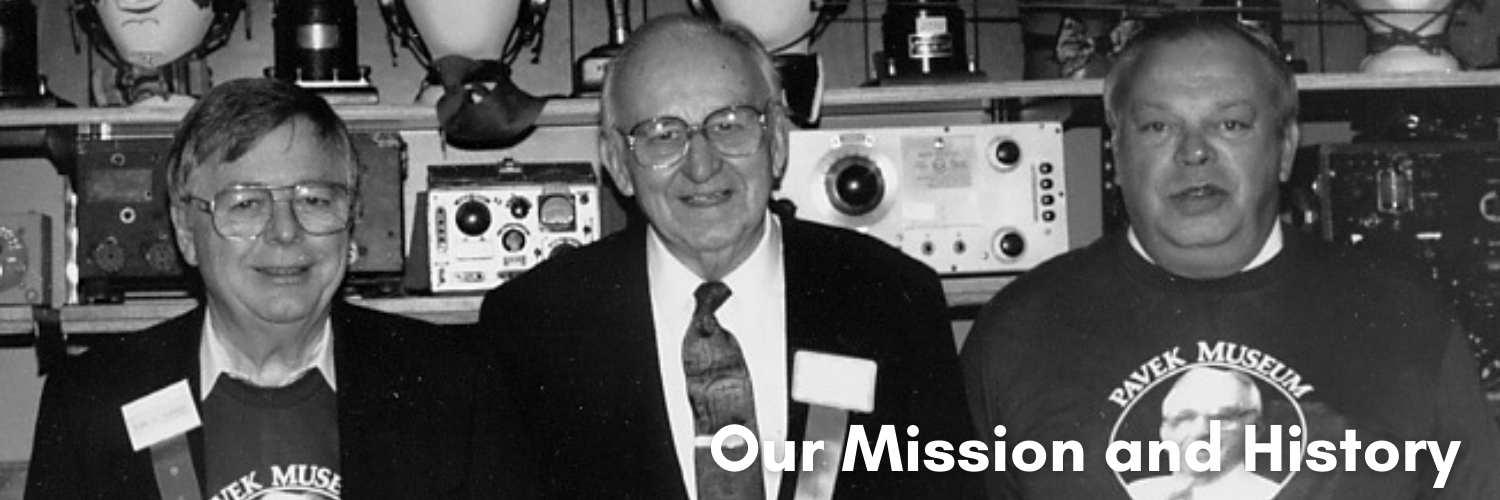
The Pavek Museum will be closed on Thursday, February 23.

To share how pioneers in electronic communications created enormous impacts on the evolution of society,
To inspire in people a passion to make contributions to our quality of life through science and the communication arts,
To preserve the rich mosaic of the development of electronic communications through a historically significant, permanent, and living repository.
We have over 12,000 square feet of antique radios, televisions, and broadcast equipment. The bulk of our inventory is the original Joe Pavek Collection, but we've added a lot more over the years since we opened in 1988.
In fact, thanks to donations from area radio and television stations, the Museum's collection is one of the largest and finest of its kind in the world.
For example, our Minnesota Collection represents more than thirty radio and television manufacturers that did business here in the 1920s. We also have many examples of historical broadcast equipment on display - cameras, consoles, microphones, and more.
One of the unique features of this Museum is the John T. "Jack" Mullin Collection, documenting the history of recording technology.
It was Jack Mullin who, while serving in the Signal Corps in Europe at the end of World War II, brought back two AEG Magnetophon tape recorders from a German radio station.
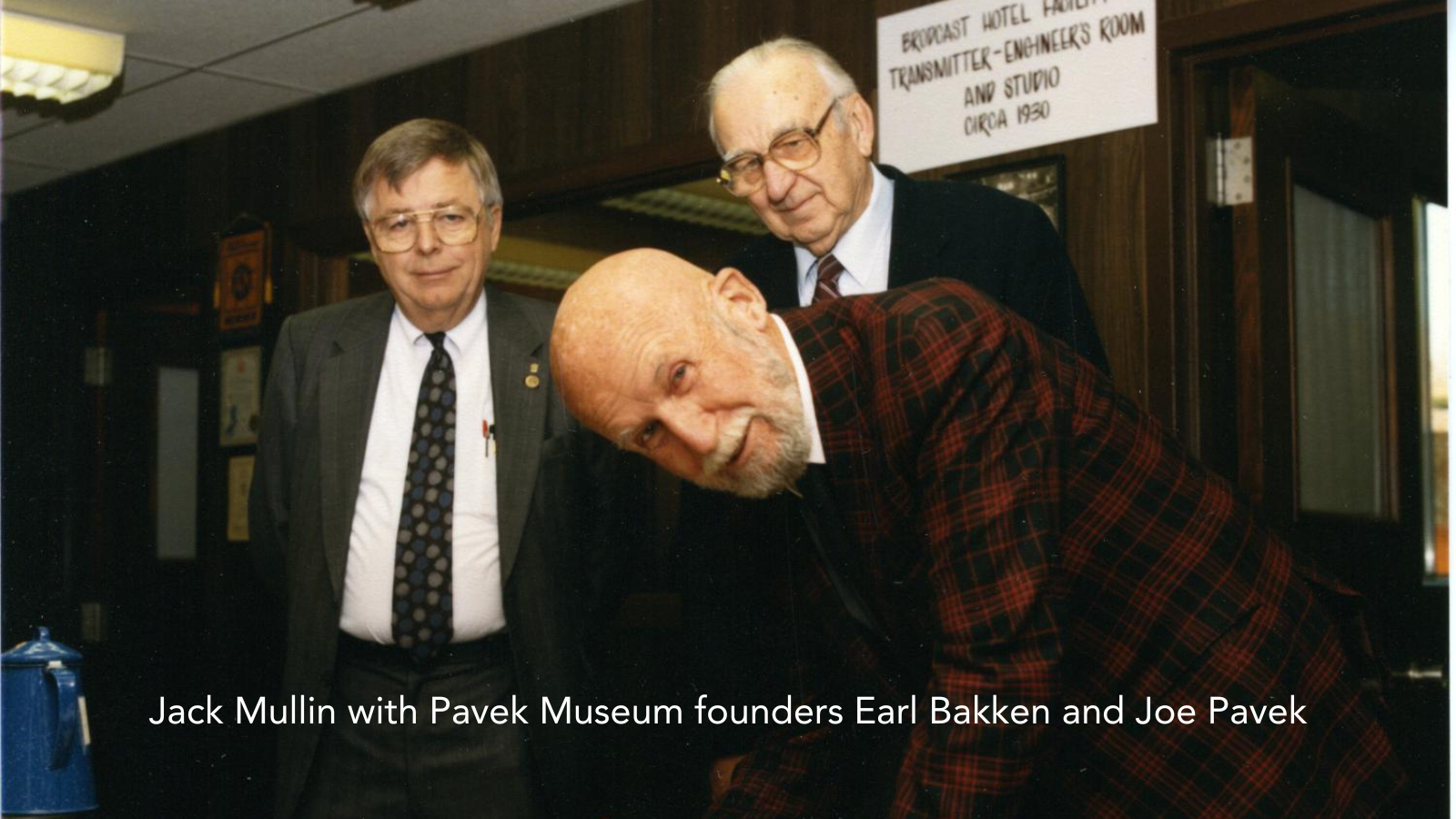
Tape recording was an unknown technology in the U. S., and Mullin was immediately hired by Bing Crosby to record his popular radio program, the first use of tape recording in American Broadcasting. The improved sound quality made the show a huge hit. The Pavek Museum acquired his world-famous collection in 1990.
Of course, hardware is only part of the story of broadcasting. It's the personalities who make this equipment come alive. Preserving their history is an important part of our mission. Featured in our growing archives are the Pioneer Broadcaster Series, videotape interviews in which people like Dave Moore, Joyce Lamont, Stanley Hubbard, and many other key figures from the local broadcast industry tell their stories and talk about the changes they've seen in radio and television.
In 2001, as part of our continuing effort to preserve and promote the best of Minnesota's broadcast industry, we initiated the Minnesota Broadcasters Hall of Fame.
On October 13th, 2001, the inaugural banquet and induction ceremonies took place at the Radisson South Hotel in Bloomington, Minnesota. Twenty-six previous recipients of the Minnesota Broadcasters Association's annual Pioneer Broadcaster Award joined twelve new inductees chosen from the fields of ownership, management, talent, and engineering. The outstanding talent of Minnesota's broadcast community now has an institution to preserve its place in history.
In addition, we have a vast library of technical and service information on electronics and electronic communication that is a wonderful resource for students, hobbyists and historians.
It was Joe Pavek who provided the foundation for our programming. His collection was started sometime in 1946 while Joe was an electronics instructor for Dunwoody Institute.
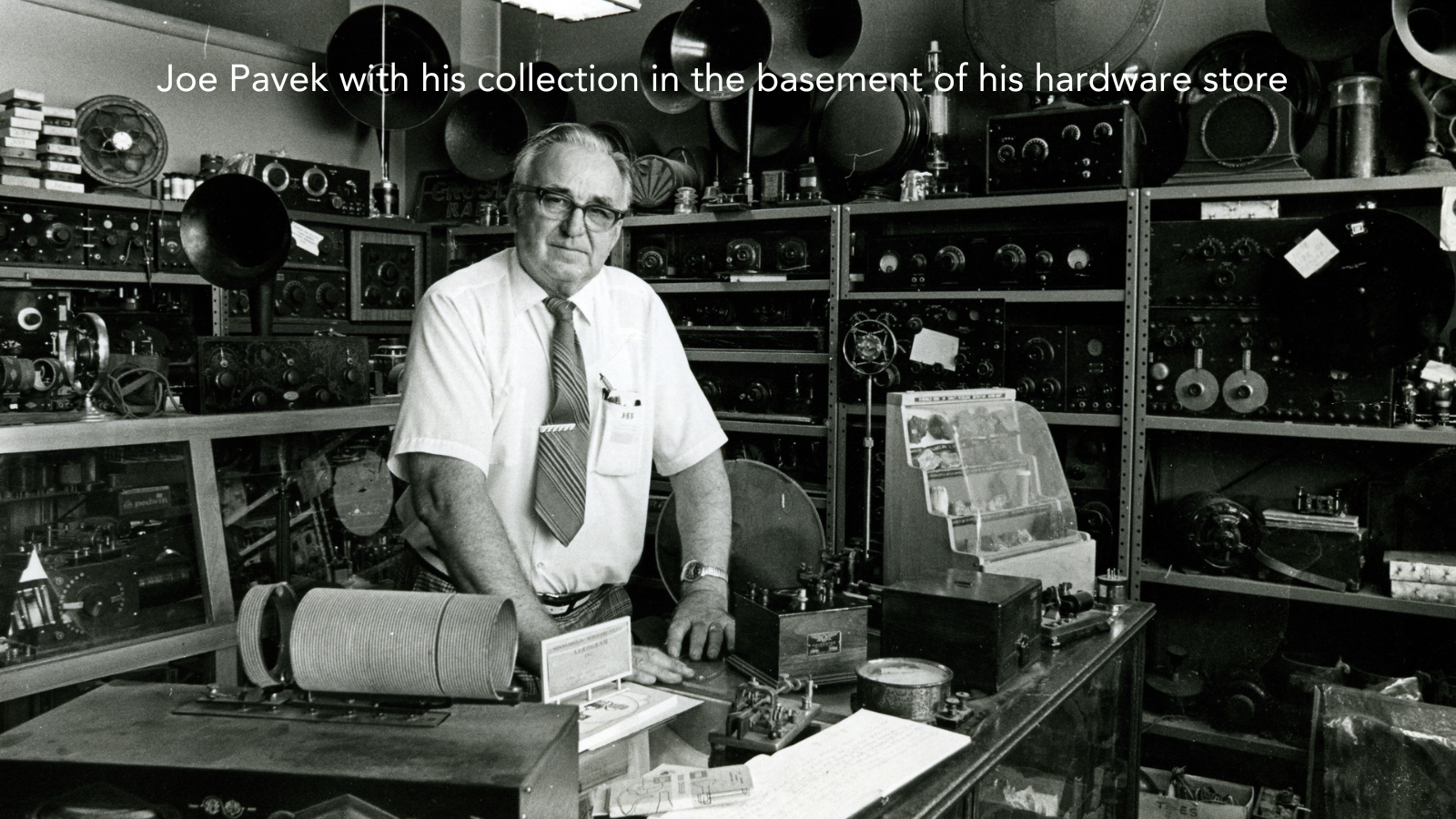
He became concerned about some of the beautiful radios being torn-apart by the students as they learned their trade, and decided to take one home, just to save it from destruction. From that point on, he never stopped collecting.
Joe was a devoted amateur radio operator and his ham radio call sign, WøOEP ("Old Empty Pockets") lives on at the Museum's club station.
Joe eventually went on to start his own business, Twin City Nut and Bolt Company on Harmon Place in Minneapolis. As his business grew, his territory expanded, and he began to call on customers in North & South Dakota, Wisconsin, Iowa and Minnesota. As he traveled through these towns, he soon discovered that if he got a haircut, he could find out virtually everything about everyone in town, including who had old radios. That's when the collection really started to grow.
Joe stored his collection at his businesses, on Harmon Place and later on Nicollet Avenue, in Minneapolis. Some time in the seventies he began to look for an angel, someone to take over the collection, house it, staff it, and keep it open to the public. By 1984, he had given up and the whole collection was set to be sold at auction. That's when Earl Bakken stepped in..
Earl is the co-founder of Medtronic and the inventor of the wearable pacemaker.
Earl put himself through college fixing radios and televisions. He shared Joe's passion for old radios and saw the potential for exciting educational opportunities that the collection provided.
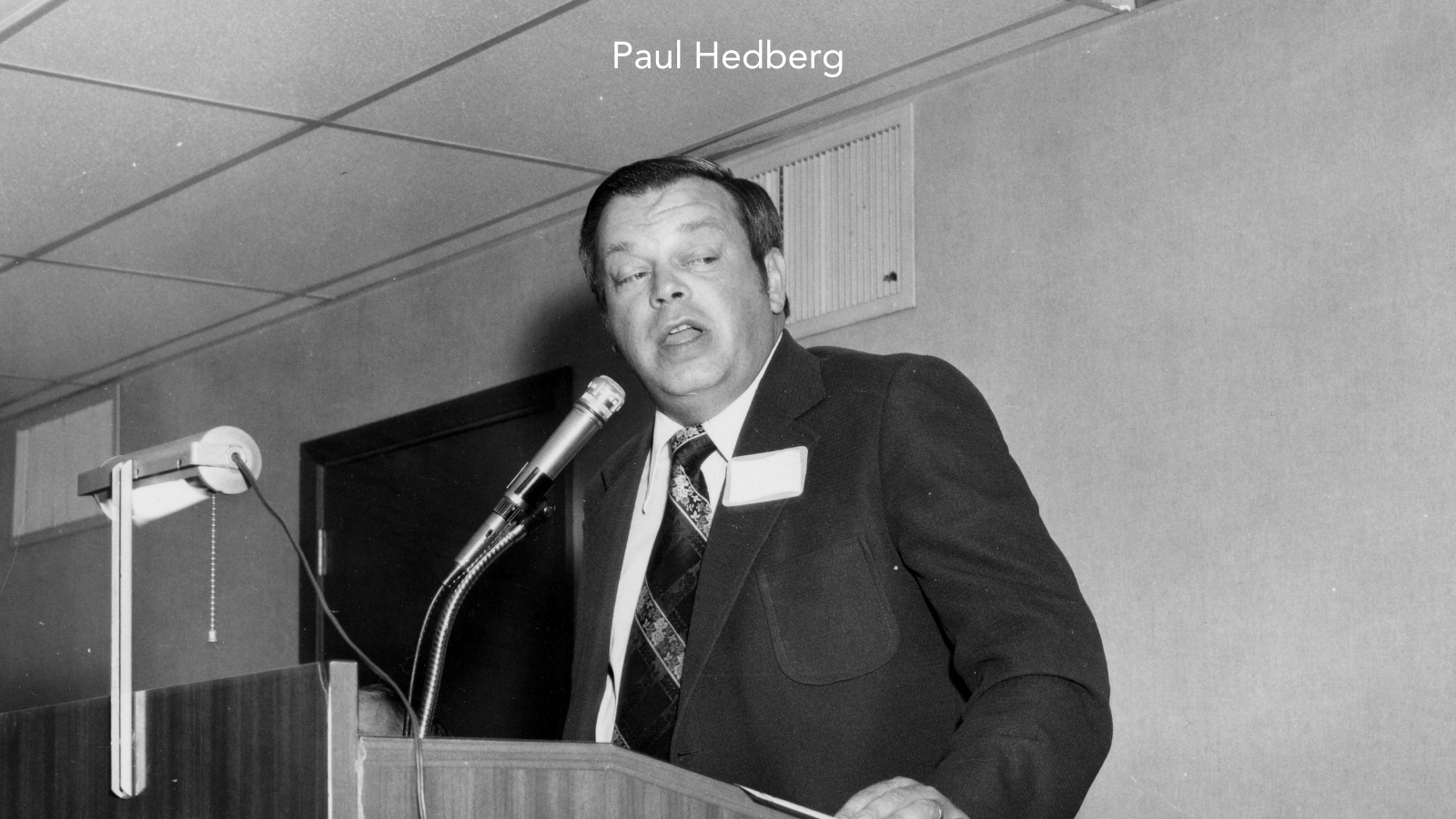
Earl Bakken, Joe Pavek, and Paul Hedberg of the Minnesota Broadcasters Association got together and formed the non-profit organization that was to become the umbrella for the Museum. Our grand opening on October 29, 1988, coincided with the fiftieth anniversary of the War of the Worlds broadcast.
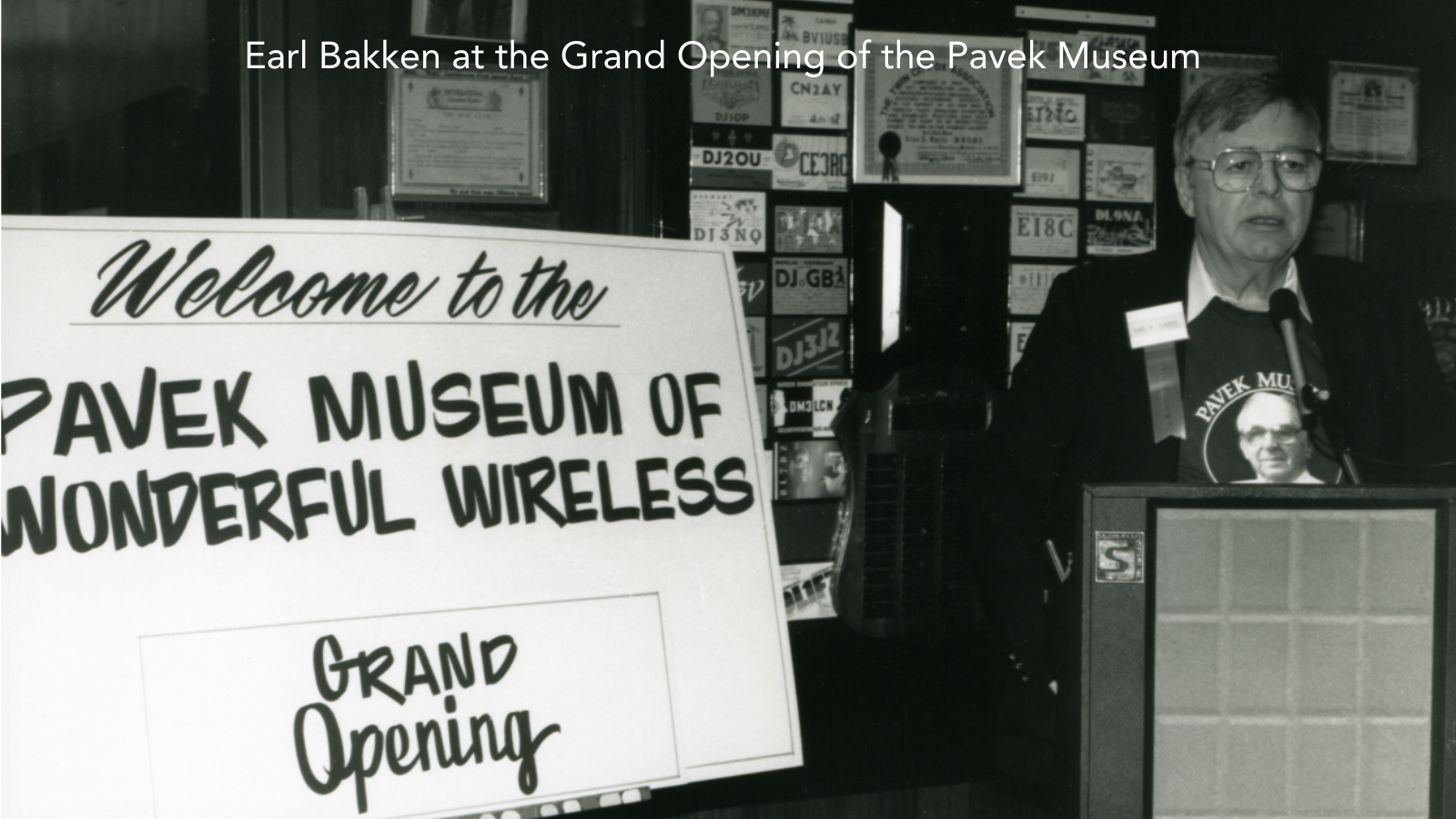
Less than a year later, in June of 1989, after realizing the fulfillment of his life's dream, Joe Pavek passed away at 81 years of age.
It was then that Earl Bakken set the course for the Museum; one that we still follow today. He told us to use the collections to create educational opportunities for children.
We started our most popular program, the Broadcast Workshop, in the fall of 1991, bringing in elementary age school children from all over Minnesota to learn about the history of electronic communication while creating their own 1960s style radio broadcast. The learning is then reinforced with an exciting and competitive quiz show.
The students and the schools love it. It's a dynamic experience supported by a unique environment.
It's one of the few places in the world where students can work and play while surrounded by seminal examples of the history of electronic communication. We're booked to capacity every year.
We continue to strive to find new ways to expand our educational programs and fulfill the goals set forth by our founders. We hope you'll become a member.